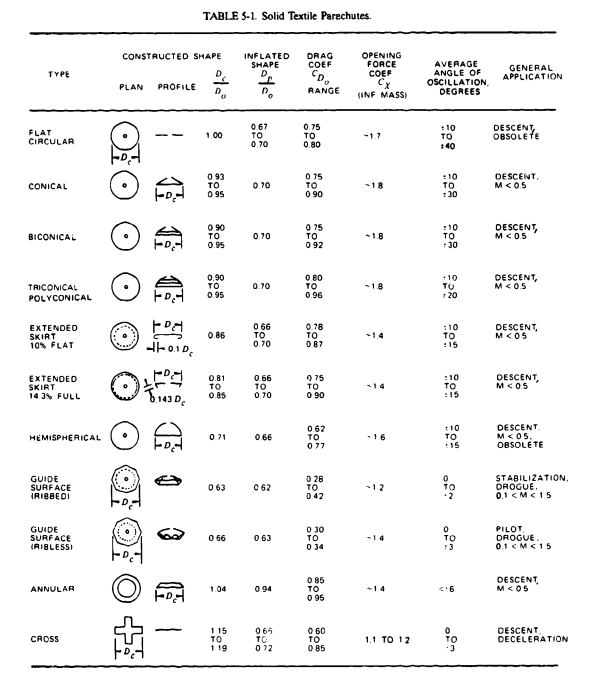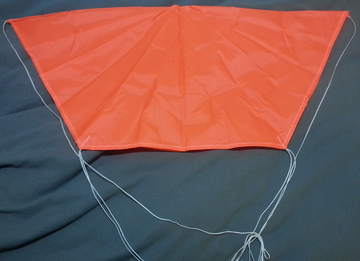Différences entre versions de « ENG-CANSAT-PARACHUTE »
(Contenu remplacé par « {{ENG-CANSAT-NAV}} {{COMMON-CANSAT-PARACHUTE}} {{ENG-CANSAT-TRAILER}} ») Balise : Contenu remplacé |
|||
| (24 versions intermédiaires par le même utilisateur non affichées) | |||
| Ligne 1 : | Ligne 1 : | ||
{{ENG-CANSAT-NAV}} | {{ENG-CANSAT-NAV}} | ||
| − | + | {{COMMON-CANSAT-PARACHUTE}} | |
| − | |||
| − | |||
| − | |||
| − | |||
| − | |||
| − | |||
| − | |||
| − | |||
| − | |||
| − | |||
| − | |||
| − | |||
| − | |||
| − | |||
| − | |||
| − | |||
| − | |||
| − | |||
| − | |||
| − | |||
| − | |||
| − | |||
{{ENG-CANSAT-TRAILER}} | {{ENG-CANSAT-TRAILER}} | ||
Version actuelle datée du 20 février 2022 à 00:43
Introduction
The CanSat use a parachute to slow it down when getting back to the earth. Otherwise the CanSat would crash!
The parachute is also used to maintain the CanSat in the proper position to properly orientate the antenna! This is essential to receive telemetry data.
The most simple parachutes to create are:
- the "Flat Shape" Parachute
- the "Cross" Parachute
Parachute opening & tenseness
The process of parachute opening and air flow capturing is a violent process. The tenseness on the fabric, wire, hook may be really impressive at the opening.
So you need to select strong fibres and realise strong assemblies.
The ideal materials are those used for human parachute (Nylon Cord, Ripstop Nylon).
Fundamentals parameters
The followings parameters are primary values to use when designing the CanSat's parachute.
- Mass : between 300gr and 350gr.
- Velocity : between 8 m/s and 11 m/s (about 29 Km/H and 40 Km/H).
- Drag Coefficient : the drag coefficient depends on the parachute shape and the fluid used (Air in this case).
Drag Coefficient
- Semi Spherical Parachute : 1.5 (narom), 0.77 (in the table below)
- Cross Shape Parachute : 0.8
- Flat, Hexagone Parachute : 0.8

Source: Parachute Size Estimator
Estimate the Drag Coefficient
You can make a drop test from a given height of your CanSat with the parachute.
When terminal velocity is known (measured), you can deduce the Drag Coefficient from the estimated velocity in free chute (if the CanSat were not equipped with a parachute).
Flat Circular Parachute
The Flat Parachutes are extremely common in the hobby rocketry fields. Thanks to their simple design, they are cheap and easy to manufacture. They also offers reliable parachute.
The trade-off is the Draft Coefficient (Cd) which is not as high for a given cloth diameter. It is hard to go wrong with a flat circular (or flat hexagonal) parachute.
The typical drag coefficients range goes from 0.75 to 0.80.
You may also find some informations about flat parachute on this NAROM page.
Parachute Design @ NAROM
The NAROM site in Norway did publish "The CanSat Book" containing lot of useful information.
The most interesting parts concerns the Parachute Design.
- Parachute Design Calculations
- Descent Physics
- Semi-spherical parachute Design
- Cross Parachute Design
- Flat Parachute Design
Parachute Design @ Esero Luxembourg
The Esero Luxembourg site did publish ressources for cansat contest.
- Parachute calculation YouTube
Excellent introduction with fundamental concept to some advance parachute calculation. A Great ressource.
Without Parachute Design @ KSat Germany
The KSat Stuttgart site did publish ressources for Fall Can concept.
Resources
- Parachute Design and Construction by Richard Nakka
- Parachute Size Estimator tool using imperial unit system (Launchwithus.org)
See this article which explains how to use it. - The Mathematics of Parachute (pdf).
Written by Meurisse D. from MC Hobby - License: CC-SA-BY.
